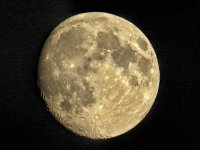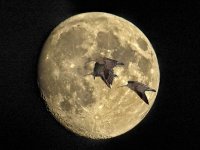Roy C
Occasional bird snapper
Paul, there are numerous tutorials on the web that would explain it better than me but here is a easy guide to Layers and Layer Masks.Any suggestions on where to start with layers Roy? I have found it very daunting and never got to grips with layers so I generally use little more than basic colour, contrast and whole image sharpening.
A layer is simply one image stacked on top of another image. A layer mask is a mask put on top of your layer which allows you to paint away parts of your layer without damaging your original image. There are many ways to do selective adjustments but I will give a very easy and basic way of doing it in Photoshop (different software will be slightly different but the principle will be the same). As an example we will assume that you want to apply some sharpening to just the bird and not the background.
1. With you image open in PS. Open the Layers window and drag it to one side of your screen (Window > Layers)
2. Duplicate the image to create a Layer (Ctrl + J is a quick way) you will now see a new layer in the layers window called Layer one. This is just a copy of your background layer.
3. Carryout the sharpening as per normal, at this stage it will be applied globally.
4. When finished sharpening hold down the Alt key and click on the 'add layer mask' icon along the botton of the Layers widow.. You will now see the sharpening you have just done disappear, do not worry - it has just been masked out.
5. Now take a White brush and paint over just the bird to reveal the sharpening underneath. This is often best done by zooming in. If you make a mistake and go over some of the background by mistake just use a Black brush over the offending part to reapply the mask over just that bit. To start with I would use a 100% hard brush for these steps but once you are used to the procedure you can play around with various brush hardness's.
6. When finished just flatten the layer, Layer > Flatten Image .
You will now see that the sharpening you did was just applied to the bird and all the rest of the image has been left alone.
That's all there is to it, you can use this to do almost anything selectively in Photoshop.
Once you have master these simple steps then there are lots more things in Layers to explore like Blending modes, Layer opacity, Adjustment layers, Stacking layers, and much much more.
Before I carryout almost anything in PS I create a copy layer (Ctrl + J) as a matter of course just in case I need to create a layer mask to apply it selectively, if it is not needed then it just takes a second to flatten the image.
I hope this helps Paul, It is very easy once you have done it a few times.
Last edited:






